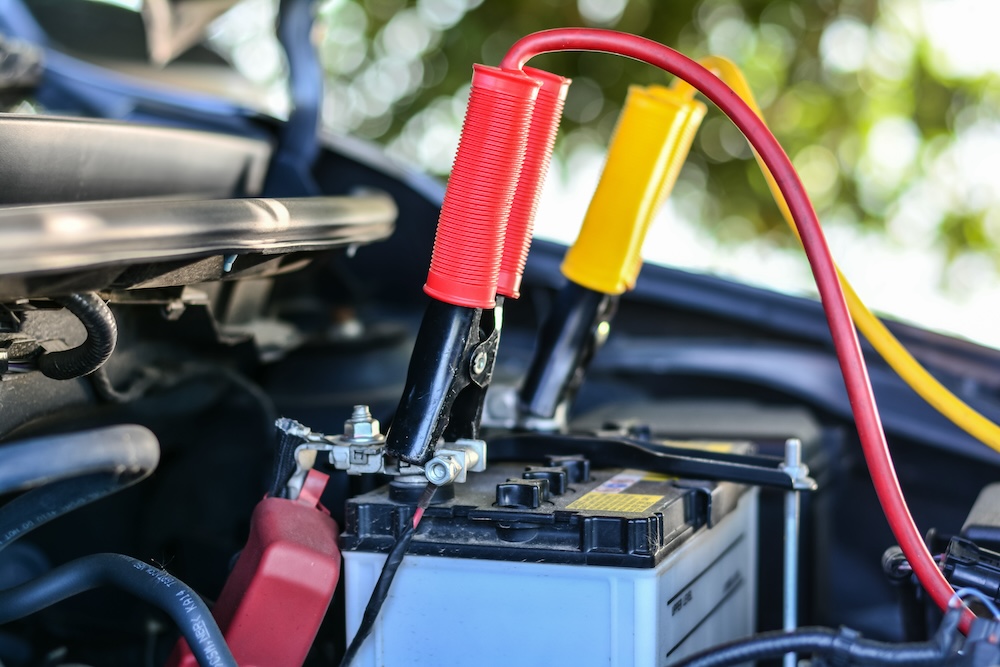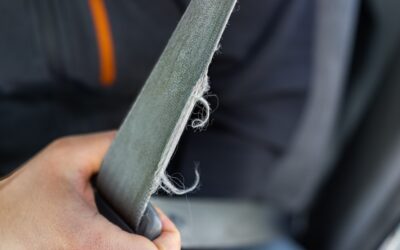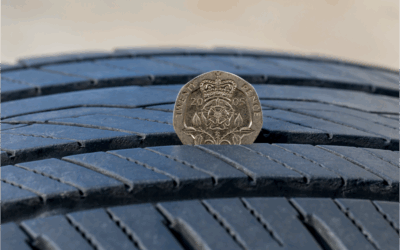In cold weather, car batteries can struggle, or even die completely. Unfortunately, many drivers learn this the hard way, when their car refuses to start on a cold morning.
In this post we’ll discuss why car batteries struggle in cold weather, before exploring ways you can start moving again should your battery die.
Why Do Car Batteries Struggle In Cold Weather?
Car batteries are powered by certain chemical reactions. In cold weather, these chemical reactions slow down, which means the battery might struggle to generate enough power to start your car.
Low temperatures can also affect a car battery’s internal resistance, which can affect the voltage supply. And in freezing temperatures, a car battery’s electrolyte solution can become less effective at generating and storing electrical energy.
Cold weather can also cause your car’s oil to thicken. This can put an extra strain on your car’s battery, which can compound the existing problems caused by low temperatures.
What To Do If Your Car Won’t Start On A Cold Day
- Reduce the strain on your battery. Turn off all of the systems that might be using excessive power, including the heating, the headlights, and the stereo. This will allow your battery to focus entirely on getting your car started.
- Check your battery for signs of life. Are there any signs of corrosion on the leads? Is it possible to check your battery’s charge? Regular battery checks become particularly important in the winter, but they should already be part of your ongoing car maintenance.
- Listen to your car. When you’re struggling to start your car, how does the engine sound? If it really sounds like it’s struggling, there might be a problem with your oil. Ensuring you have sufficient oil levels should already be on your car winter checklist.
If Your Car Battery Dies in the Cold, Will It Recharge?
Most car batteries have a lifespan between three and five years. If your car battery’s particularly old, and it dies, then you may have no choice but to get a replacement. But if your battery’s relatively new, you should be able to recharge it.
You can quickly get the power you need to start your car through jump-starting the battery. You can get dedicated jump-starter kits, but these tend to be quite expensive. Jump leads and booster cables are a lot cheaper, but to use these, you’ll need another car to jump-start yours.
Can You Jump-Start Manual, Automatic, Petrol or Electric Cars?
Whether or not you can jump-start a car depends on the type of vehicle you have.
Manual vs. Automatic Cars
If you drive a manual car, and the battery is low but not completely dead, you might be able to “bump start” it. This means getting the car moving (usually by pushing it), then releasing the clutch while in gear to start the engine. This won’t work if the battery’s completely flat, though.
Automatic cars are a bit different. You can’t bump start an automatic, so if the battery’s flat, you’ll need to use jump leads or a portable jump starter.
Petrol vs. Electric Cars
Most petrol and diesel cars can be jump-started the usual way – with jump leads and another vehicle, or a jump starter pack.
Electric cars are different. They don’t have a traditional starter motor, so you can’t jump-start the main battery. However, most EVs have a small 12-volt battery that powers things like the lights and central locking. If that battery goes flat, you might be able to jump-start it – but you’ll need to check your owner’s manual, as doing it incorrectly can damage the car.
Hybrid Cars
Hybrids are a mix of petrol and electric power. Like EVs, they often have a 12-volt battery that can sometimes be jump-started – but again, always check the manual first.
No matter what kind of car you drive, make sure you follow the proper instructions and take care when using jump leads. If you’re unsure, it’s usually best to call your breakdown provider.
How To Jump-Start Your Car
- Park the other car close to your car, ideally with the bonnets facing each other.
- Turn off the engine in both cars. Also turn off all other systems, including the headlights, the stereo, the heating, and so on.
- Make sure the handbrake’s engaged in both cars, and that each car is in a neutral gear. This will prevent either car from jolting forward during the process.
- Find the battery terminals in each car. If you see any signs of corrosion on either terminal, carefully clean it with a wire brush before you begin.
- Consult your owner’s handbook, or the booster cable instructions, for information on how to connect the cables. Usually, it’s a case of attaching the red cable to each vehicle’s positive terminal, before connecting the black cable from the other car’s negative terminal to your car’s chassis.
- Start the engine in the other car, and let it run. Then start the engine in your car.
- Once the engine’s running in your car, carefully disconnect the cables. Once again, be sure to check any instructions for information on how to do this safely.
After you’ve jump-started your battery, drive for as long as possible to recharge it. Drive for at least 20 minutes, but remember that it takes batteries longer to charge in cold weather. So, the longer you can drive, the better.
How To Keep Your Battery Running in Cold Weather
- Try to park somewhere warm. If you don’t have access to a heated garage, consider getting a winter car cover.
- Regular driving can help keep a car battery charged.
- Avoid short journeys. As we mentioned above, it takes longer for batteries to charge in cold weather. Occasional 20 minute trips will not give your battery enough time to retain its charge.
- If you know you won’t be driving for a while, try to run your car for around 30 minutes at least once a week. Or, disconnect your battery entirely, and charge it again before you reconnect it.
- Stay on top of your car maintenance throughout the year, so that you’ll be able to address any potential issues before they cause you any problems.
Also, consider adding breakdown cover when you buy your car insurance policy. If your car does struggle to start on a cold winter morning, the right level of breakdown cover can help you to get on the move again.




